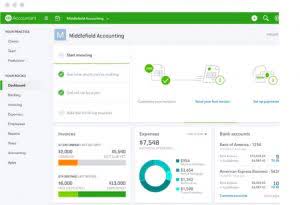Call us:+8801312396849
09611400087

Balance sheet presentations differ, but the concept remains the same. Some businesses prefer the account-form balance sheet, wherein assets are presented on the left side while liabilities and equity are presented on the right (see highlighted part). Pension obligations are crucial to understanding a company’s commitment to its employees and the potential strain on future resources. Accurately accounting for pension obligations can be complex and may require actuarial valuations to determine the present value of future obligations. When a company determines that it received an economic benefit that must be paid within a year, it must immediately record a credit entry for a current liability. Depending on the nature of the received benefit, the company’s accountants classify it as either an asset or expense, which will receive the debit entry.
Current vs. non-current liabilities
This is the single most important equation that you are likely to come across in credit accounting. This calculation involves comparing the total liabilities with the total assets. In a small business, these usually are simple because they only pertain to basic things, like A/P, loans, salaries, and taxes. However, as your business grows and needs to comply with the US GAAP, there are other types that you must consider for accounting purposes.

Different Types of Liabilities in Accounting

Choose CFI for unparalleled industry expertise and hands-on learning that prepares you for real-world success. Contingent liabilities are those liabilities list of liabilities in accounting that may or may not arise depending on the outcome of a future event. The day you hire your first employee, you become responsible for payroll tax.
What are 10 examples of assets?
Most contingent liabilities are uncommon for small businesses, but here are some that you might encounter. US GAAP requires some businesses to disclose or report contingent liabilities. Small businesses that aren’t required to comply with the US GAAP may opt not to consider contingencies in financial reporting.
- Liabilities are a component of the accounting equation, where liabilities plus equity equals the assets appearing on an organization’s balance sheet.
- This includes money the company needs to repay or goods and services they need to supply or render respectively.
- In this example, your company has total assets of $150,000 and total liabilities of $70,000.
- Another example of a long-term asset might be money loaned to a shareholder that won’t be repaid for several years.
- The money borrowed and the interest payable on the loan are liabilities.
- Accounts payable is the firm’s largest current liability, which is often the case among most businesses.
- For more on this, dive into our accounting made simple and accounting 101 pdf articles.
The bond issuer (company) must pay a coupon (interest) based on coupon rate and face value. At maturity, the issuer must pay the final coupon plus the principal. Fincent is a 21st century Finance company that offers premium bookkeeping services at affordable rates.
Example 1: Freelance Copywriting Business
In accounting, assets are what a company owns, while liabilities are what a company owes. Liabilities are usually found on the right side of the balance sheet; assets are found on the left. Notes payable is similar to accounts payable; the difference is the presence of a written promise to pay. A formal loan agreement that has payment terms that extend beyond a year are considered notes payable. If you have a loan or mortgage, or any long-term liability that you’re making monthly payments on, you’ll likely owe monthly principal and interest for the current year as well.
- Liabilities are nothing but payments due to those you owe money to.
- If you’re dipping your toes into accounting or finance, understanding a balance sheet is a must.
- Paid-in capital refers to the excess amount realized from the sale of shares above their par value.
- Lawsuits and the threat of lawsuits are the most common contingent liabilities but unused gift cards, product warranties, and recalls also fit into this category.
- Assets refer to resource whether tangible or intangible which is owned by a company and adds value to it.
Common Types of Liabilities

